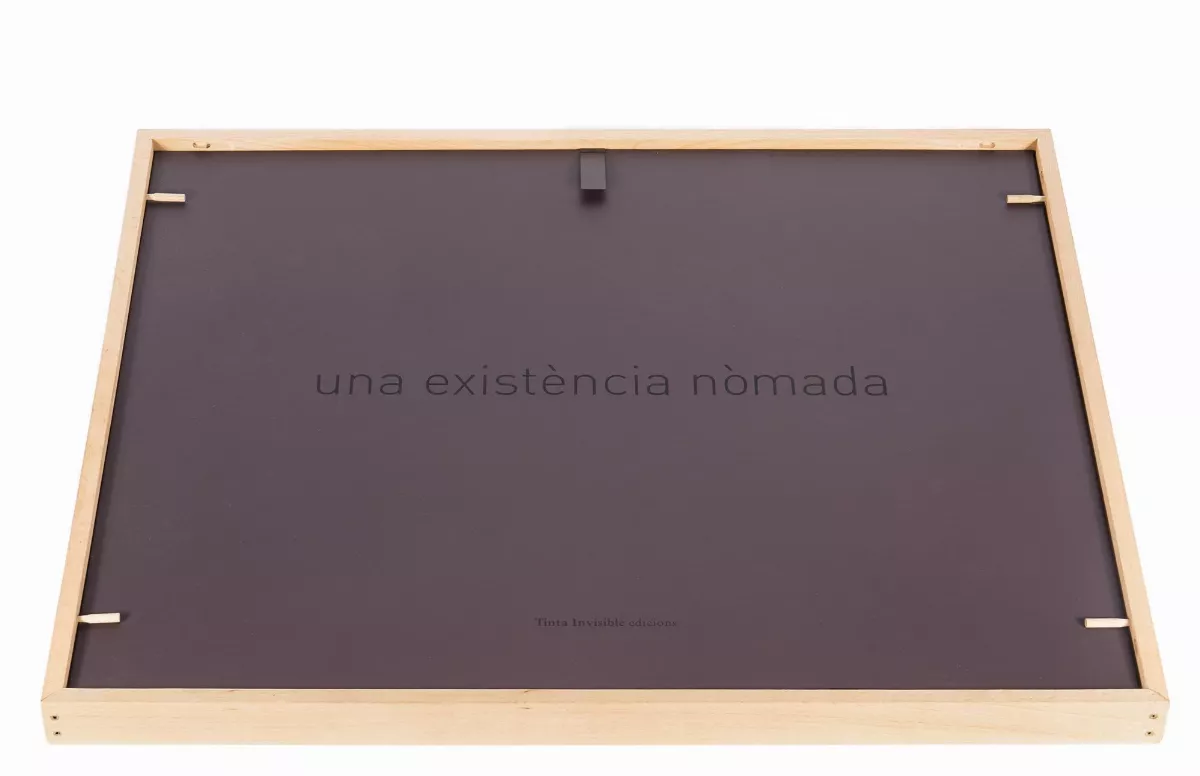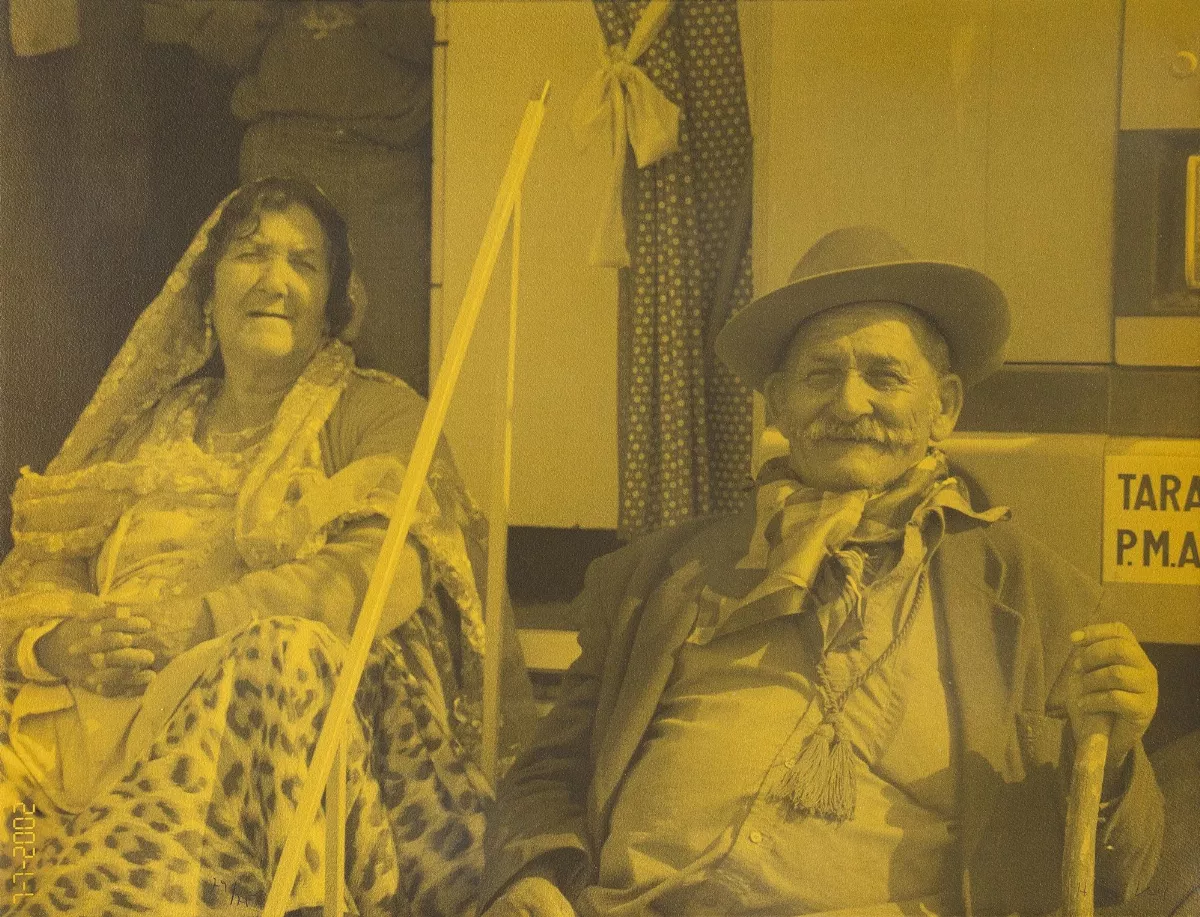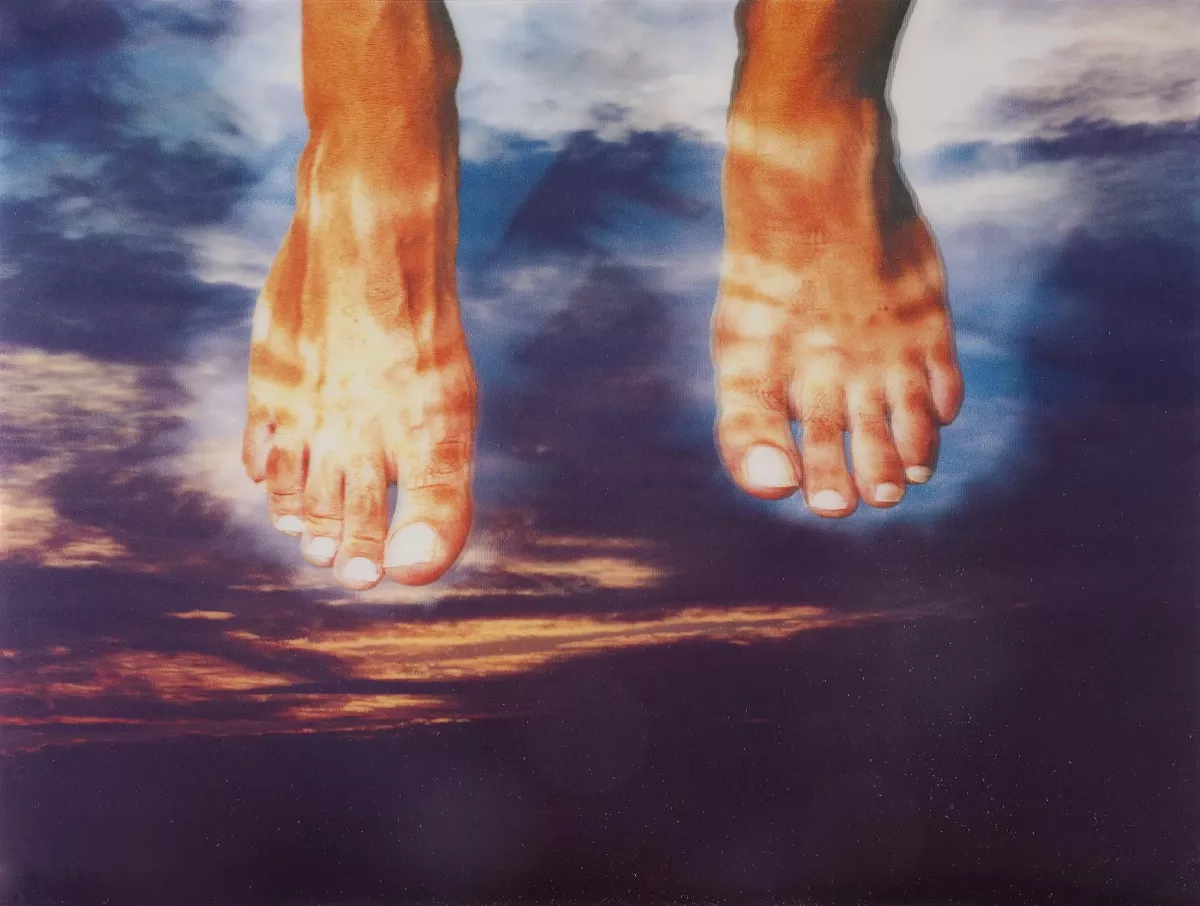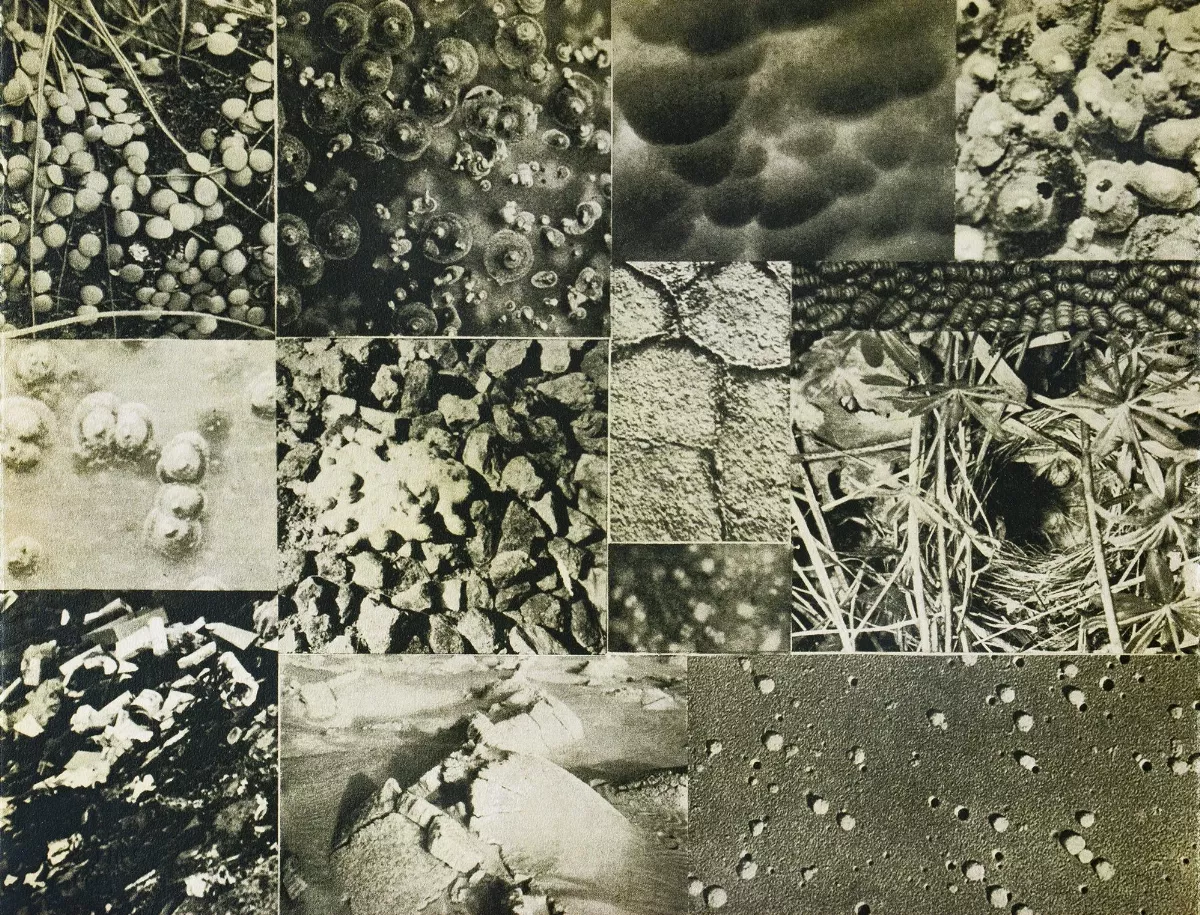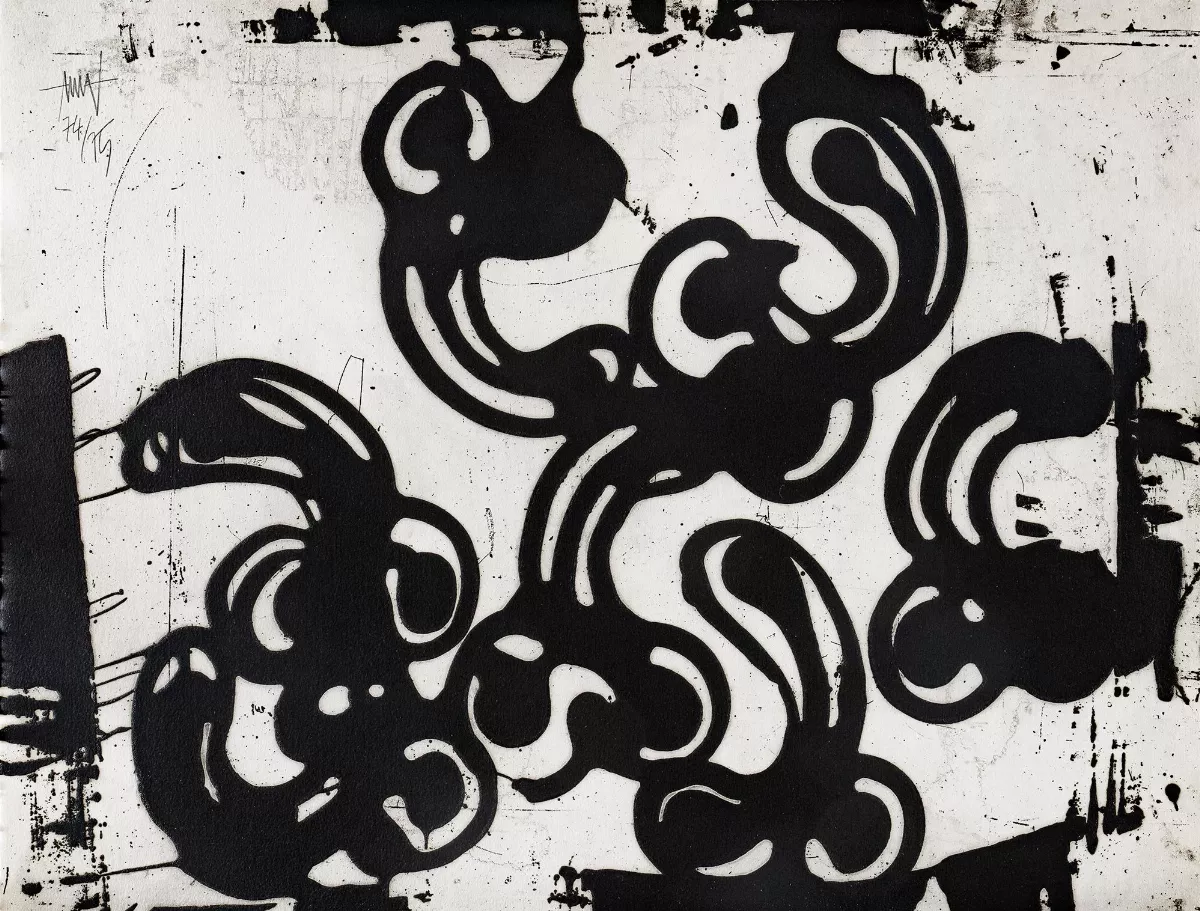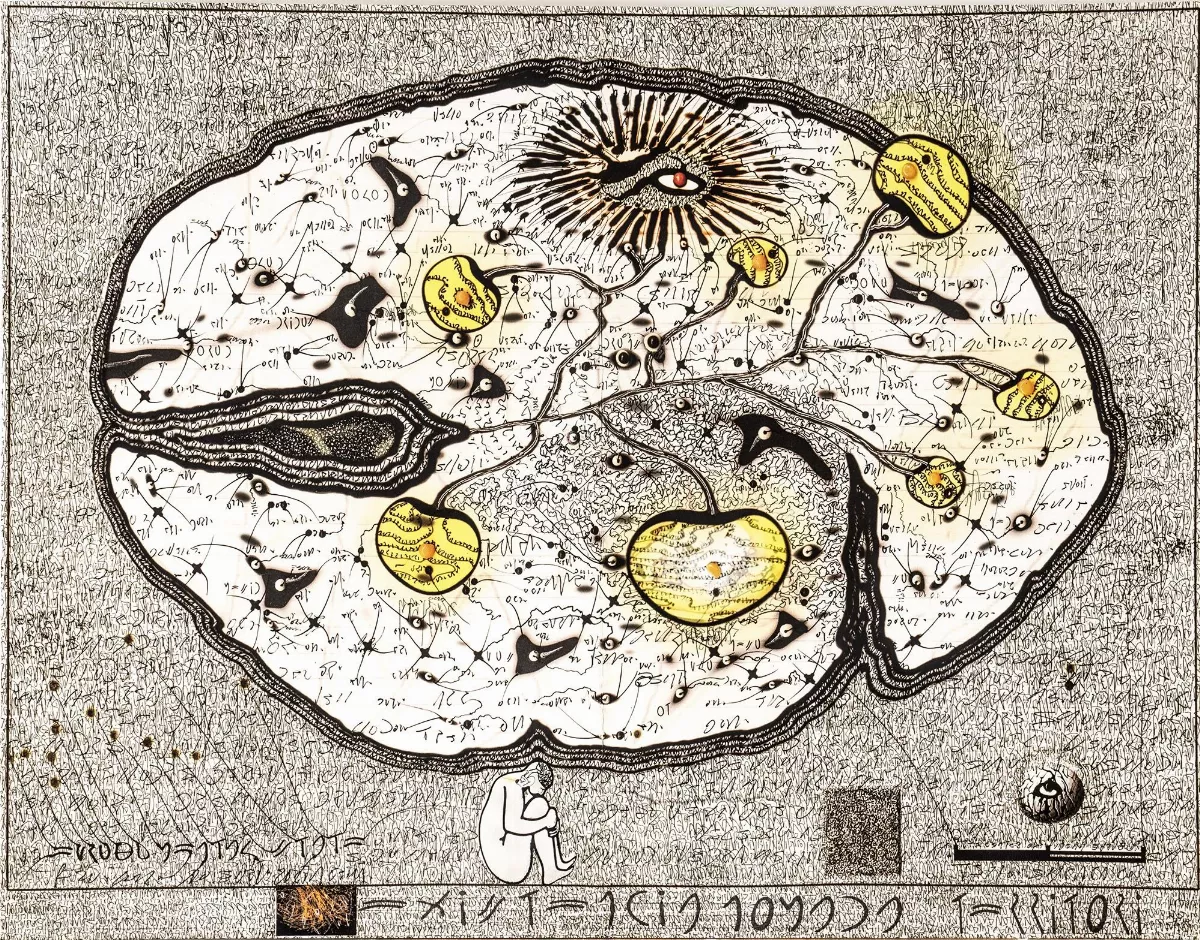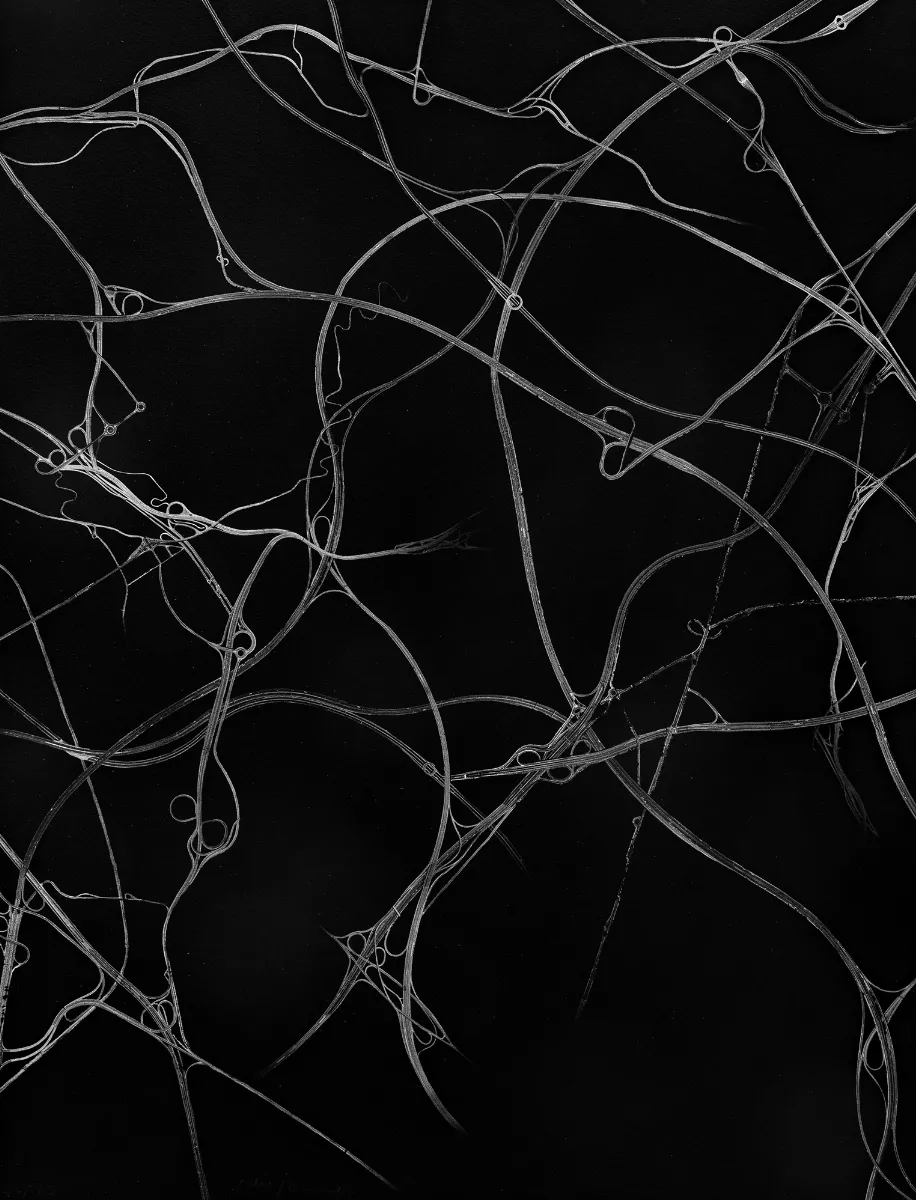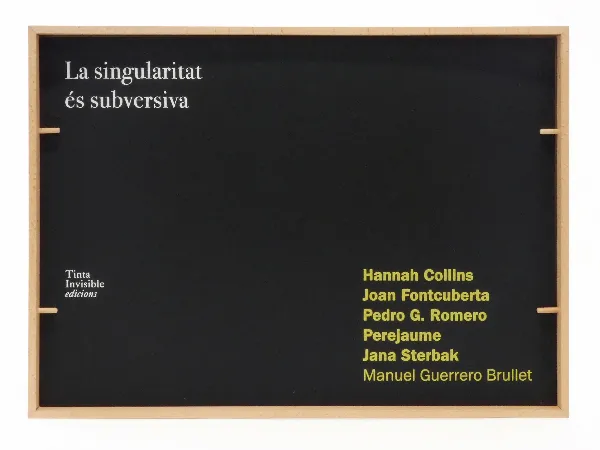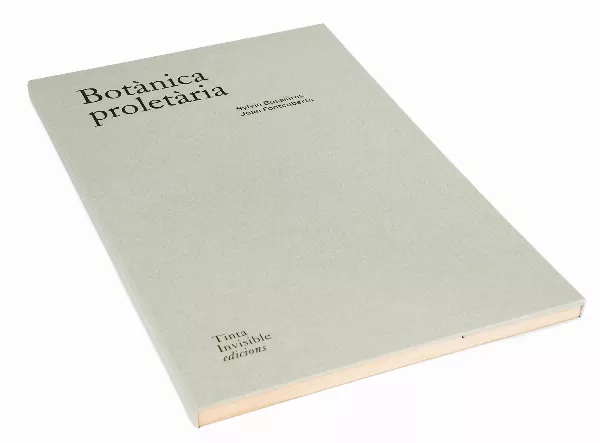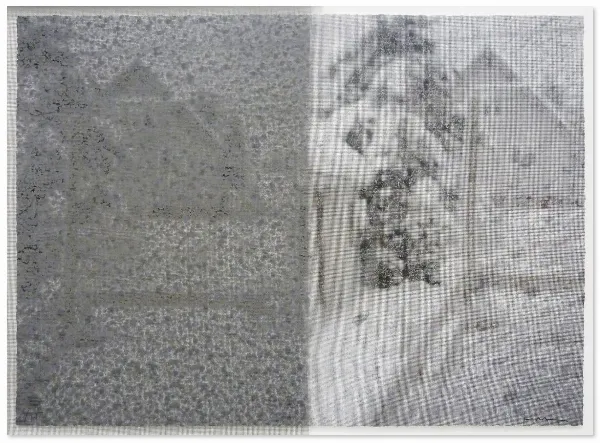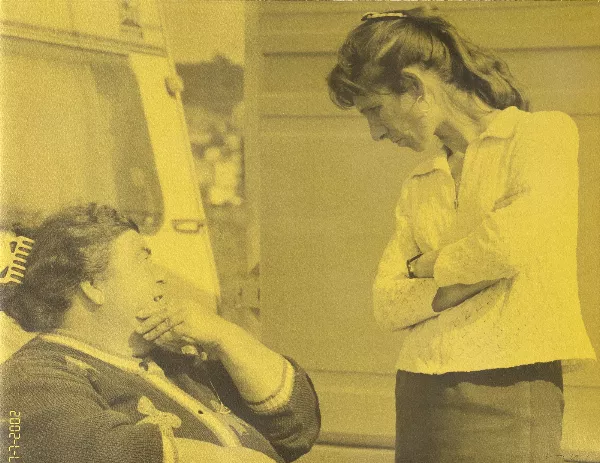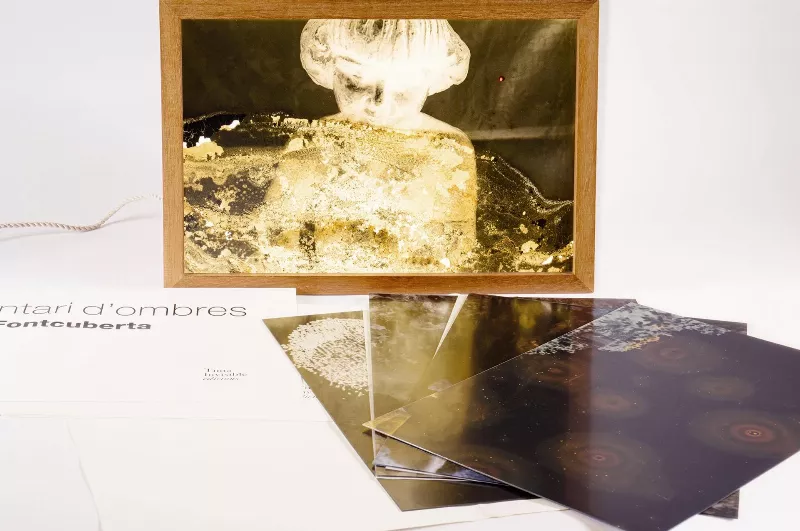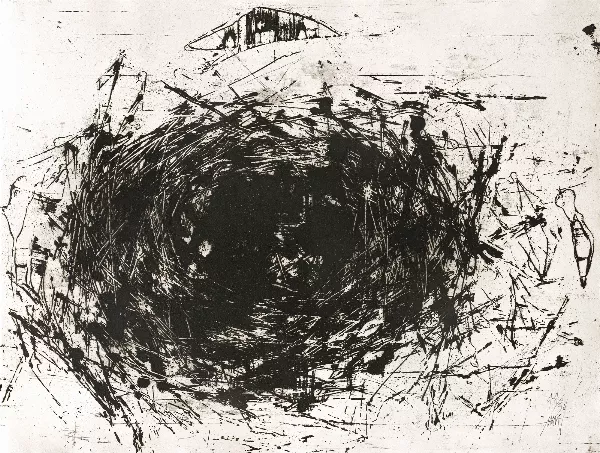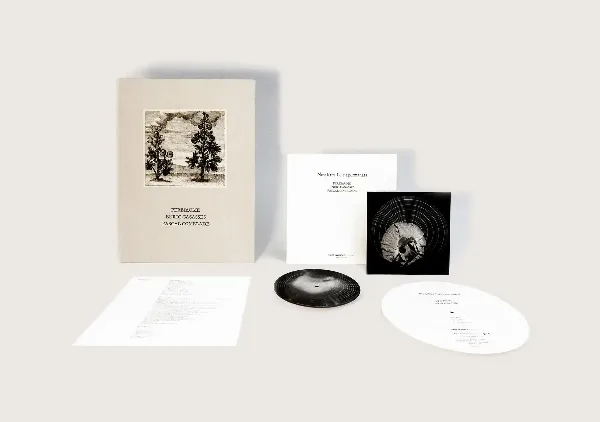Una existència nòmada
AMAT, Frederic
|COLLINS, Hannah
|DURAN, Pep
|EVRU
|FONTCUBERTA, Joan
|LLENA, Antoni
|PAZOS, Carlos
|PEREJAUME
|ROSSELL, Benet
WORKS
|COLLECTIONS
UNA EXISTÈNCIA NÒMADA (A NOMADIC EXISTENCE)
Carlos Pazos, Frederic Amat, Evru, Antoni Llena, Joan Fontcuberta, Benet Rossell, Perejaume, Hannah Collins, Pep Duran, Manuel Guerrero Brullet
2003 - 2005
Places and names call out and fall silent. Authors and books pile up on the table and in the library, but love and desire are what make the world move. And yet it is death and sex that tell us we are alive.
Like any literary text, the title, Una existència nòmada, is intended to allow an open and plural reading. It refers to the very fact of the work of art, to engraving, as a fragile and easily transportable object; to the very existence of contemporary men and women, driven by constant change, to the speed of the information society. Paradoxically, it is from the awareness of this nomadic existence that it is possible to think about the present, in all its complexity, to fix ideas that can be rooted in reality and to make dialogue with the other, with others, possible, by way of a lightness and speed that enable us to express the spirit of our time.
Manuel Guerrero Brullet
A wooden box-frame contains the nine pieces that configure this project.
Joan Fontcuberta proposes a black and white photograph, developed by hand, on baryta paper. A selection of textures, from the series “Hemogrames”, that have not been captured by a camera. The image is developed from a drop of blood deposited on a microscope slide that serves as a photographic cliché, for positivising. In this work, Fontcuberta is more interested in the essence than the form and multiplicity of readings it evokes.
With his proposal Rulot, Antoni Llena presents a formally and conceptually poetic piece. The work captures the trails left by snails as they traversed a sheet of paper. The piece is resolved with a screen-print and iridescent UVI ink.
Benet Rossell creates with the technique of photogravure and airbrush this piece that bears the title Cap a casa. It is a PET/TAC image of a brain where certain zones have been electronically tagged. The title plays with the ambivalence of the word cap (head) that refers to the part of the body and to the verb that implies displacement.
Gypsies is a photogram from one of the films of Hannah Collins. The image, initially bigger, is reframed and sectioned into two different ones. The one presented in this project shows a man and a woman of gypsy ethnicity, in clear reference to the nomadism of this community. The technique employed is photolithography.
The work of Pep Duran is based on a collage made by the artist. The images that configure it have been extracted from scientific magazines from the fifties. The photogravure by Pep Duran shows a graphic composition with images of different types of soil and organic forms.
Frederic Amat presents a scheme of organic drawings in black on white, realised in aquatint. The thick strokes of the phallic forms, repeat, pile up, and dance across the paper, generating a suggestive, evocative and dynamic web.
The work of Perejaume, Descriure així, presents a sinuous network of roads on a black ground. This image arises from the digital manipulation of orthophotographs. The artist uses the highway network of roads, motorways, and junctions to draw an organic map where the absence of landscape is latent. The technique is digital giclée print.
Evru, with his work Mapa d’evrugo, offers the keys to interpret and read the Evrugo Mental State. The drawing of a brain appears, where the personal cosmogony of the author is expressed with all the real and imaginary elements that configure the narrative behind the corpus of his work. It tells us of a mental, physical, scientific, and mystical territory. To realise the work digital giclée printing and etching have been used.
De qué color es la piel de Dios, a work by Carlos Pazos, is a lenticular print. In the foreground appear a pair of feet, ascending to the sky. These reveal on the skin the traces left by the sun, traced through a pair of sandals, revealed by sunburnt gaps. In the background, on a second plane, appears a splendid red sky at sunset.
The edition contains:
Joan Fontcuberta, Hemogrames, 2003. Hand-developed photograph on baryta paper, 76 x 56 cm.
Antoni Llena, Rulot, 2003. Screen-print in three stages with UVI iridescent ink on Arches paper, 250 g, 56 x 76 cm.
Benet Rossell, Cap a casa, 2003. Two photopolymer plates and airbrush on Arches paper, 250 g, 76 x 56 cm.
Hannah Collins, Gypsies, 2004. Two-colour photolithograph on Arches paper, 250 g, 56 x 76 cm.
Pep Duran, Sense títol, 2004. Monochrome photopolymer on Arches paper, 250 g, 56 x 76 cm.
Frederic Amat, Sense títol, 2004. Copper-plate etching based on a photogravure, on Arches paper, 250 g, 56 x 76 cm.
Perejaume, D’escriure així, 2005. Digital print with Ultrachrome pigmented inks on Somerset Enhanced paper, 255 g, 76 x 56 cm.
Evru, Mapa d’evrugo, 2005. Digital print with Ultrachrome pigmented inks and copper plate etching on Somerset Enhanced paper, 255 g, 56 x 76 cm.
Carlos Pazos, De qué color es la piel de Dios, 2005. Lenticular print on plastic, 56 x 76 cm.
Manuel Guerrero Brullet, Una existència nòmada, 2005. Text printed in screen-print on Arches paper, 250 g, 56 x 76 cm.
Graphic design by Jaume Roure.
The edition is made up of:
75 boxes, signed and numbered from 1/75 to 75/75.
10 boxes PA signed and numbered from I/XX to X/XX.
10 prints PA signed and numbered from XI/XX to XX/XX.
5 boxes HC signed and numbered from 1/5 al 5/5.
By the same artist
-
![Trauma #0390, 2023 Trauma #0390, 2023]()
Trauma #0390, 2023
FONTCUBERTA, Joan
800,00€ -
![La Singularitat és subversiva La Singularitat és subversiva]()
La Singularitat és subversiva
COLLINS, Hannah
|FONTCUBERTA, Joan
|G ROMERO, Pedro
|GUERRERO, Manuel
|PEREJAUME
|STERBAK, Jana
4.900,00€ -
![A la intempèrie A la intempèrie]()
A la intempèrie
ABALLÍ, Ignasi
|JAAR, Alfredo
|PEREJAUME
|PLENSA, Jaume
|VALLDOSERA, Eulàlia
8.000,00€Sold out -
![Botànica proletària Botànica proletària]()
Botànica proletària
BUSSIÈRES, Sylvie
|FONTCUBERTA, Joan
2.400,00€ -
![El meu país és l'hivern El meu país és l'hivern]()
El meu país és l'hivern
FONTCUBERTA, Joan
800,00€ -
![Gypsies 2 Gypsies 2]()
Gypsies 2
COLLINS, Hannah
650,00€ -
![Inventari d'ombres Inventari d'ombres]()
Inventari d'ombres
FONTCUBERTA, Joan
4.600,00€ -
![Niu Niu]()
Niu
AMAT, Frederic
650,00€ -
![Nosaltres i els agermanats Nosaltres i els agermanats]()
Nosaltres i els agermanats
CASASSES, Enric
|COMELADE, Pascal
|PEREJAUME
4.900,00€
